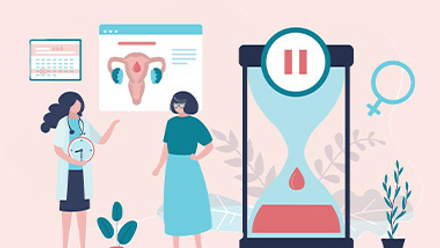Why health and wellbeing strategies should be gender specific
Employers face a host of challenges this year, from the economic climate and cost-of-living crisis to the ongoing impact of the Covid-19 pandemic, which has shifted societal values and changed the way people work.
Talent retention and recruitment remain a high priority for many businesses, with some HR teams also dealing with poor employee engagement, mental health issues and social isolation resulting from hybrid or home working.
Add to the mix the need to improve diversity and inclusion, and it’s clear employers have much to contend with.
Providing health and wellbeing benefits to attract, retain, engage and reward employees has never been so important, but what does a good benefits package look like and should it be tailored differently to men and women?
Changes in health and wellbeing benefits
There is growing recognition that a one-size-fits-all benefits package is unlikely to fit the post-pandemic business world.
Howden’s 2022 benefits design report, in partnership with REBA, noted a shift towards personalisation, with 85% of employers planning to focus on this by 2024.
The report also highlighted that nine in 10 employers will focus on ensuring fairness in their benefit offerings across the workforce.
Gender-specific initiatives are part of these shifts, as well as the need to personalise and improve fairness across pay grades.
Many employers recognise that men and women’s health needs differ and there are some conditions and diseases which are more prevalent depending upon their ‘cisgender’ (the gender individuals were assigned at birth). In the UK, cisgender men die typically three-and-a-half-years younger than cisgender women.
They also are more likely to be overweight and more at risk of suicide, whereas cisgender women may experience health issues related to female reproduction such as periods, fertility and the menopause.
Start talking and stop avoiding
Employers should start normalising conversations which might have previously been avoided to ensure both genders are supported in the workplace.
Many organisations tap into national health events such as Movember, Men’s Health Week and Breast Cancer Awareness Month to run gender-specific awareness campaigns.
But gender shouldn’t be considered in isolation. Workforce demographics such as age, location and the type of work employees are doing (manual, office, shift, etc) all influence what health and wellbeing benefits should be offered.
Furthermore, employers must be mindful that not every employee identifies as male or female. Other expressions of gender such as transgender, non-binary and intersex people may be in the minority, but they need to be acknowledged and inclusive language used in all communications.
A good health and wellbeing package, therefore, will consider all these elements and meet the specific needs of the workforce. In turn, this will help HR teams and businesses in managing the challenges they face.
Look at the data
The starting point for any new strategy is to review existing data, rather than simply following trends. Data should be collated from as many sources as possible, including absences, employee feedback, the take-up of current benefits and wellbeing initiatives and reviewing claims histories.
With this information, a clearer picture of the health and wellbeing needs of the workforce will emerge – indicating where to prioritise actions and spending.
The business profile and engagement levels may highlight issues relating to gender where there is a clear need to create specific offerings for men or women.
For example, if you have a high population of women below the age of 45, offering a variety of sanitary products in the toilets might be a focus of your wellbeing strategy. Men are less likely to access health services regularly, so if your workforce is predominantly male, you may want to implement targeted initiatives focused on early detection of common conditions that can be missed or looking at ways to increase their engagement with their doctor (or a virtual GP).
Engage the workforce
If gender specific initiatives are introduced, it is important to engage the wider organisation where appropriate/possible, as well as ensuring that individuals who don’t identify as either gender do not feel excluded.
This is key, for example, if introducing menopause support for the wider organisation and running an awareness campaign on the signs and symptoms people experience. This is also particularly important for line managers so they can support people who are experiencing the menopause and could also benefit younger employees who haven’t reached menopause yet.
Equally, if the business is running a campaign about male health, you should educate the wider business on issues such as prostate cancer or suicide rates and what they can do to support this.
While companies may want to tailor health and wellbeing support to men and women, this should not be in isolation but part of a well thought out, evidence-based strategy that will engage employees, change behaviour and improve the overall health and wellbeing of the organisation.
Supplied by REBA Associate Member, Howden Employee Benefits
Howden provides insurance broking, risk management and claims consulting services, globally. We work with clients of all sizes to provide dedicated employee benefits & wellbeing consultancy.








